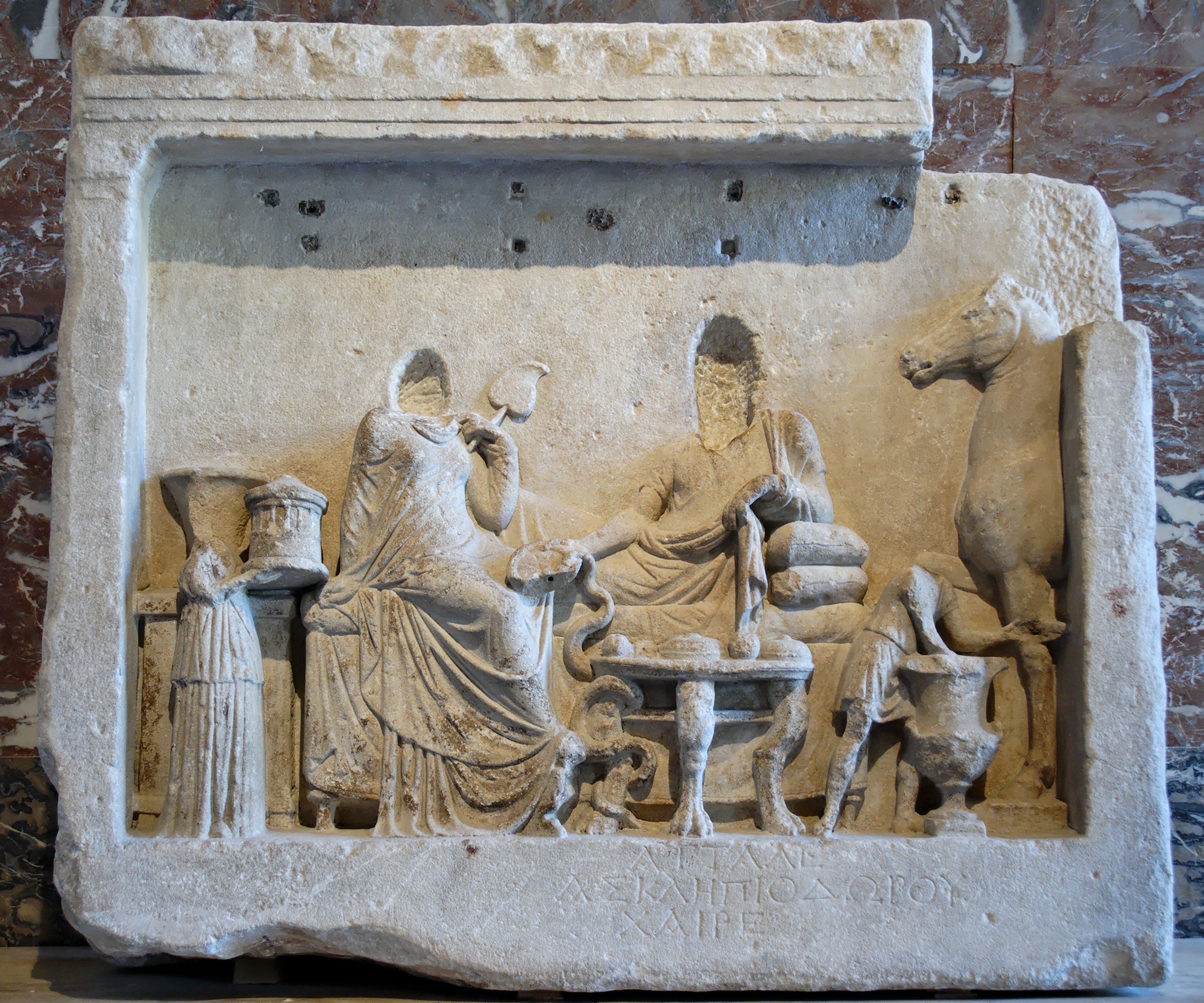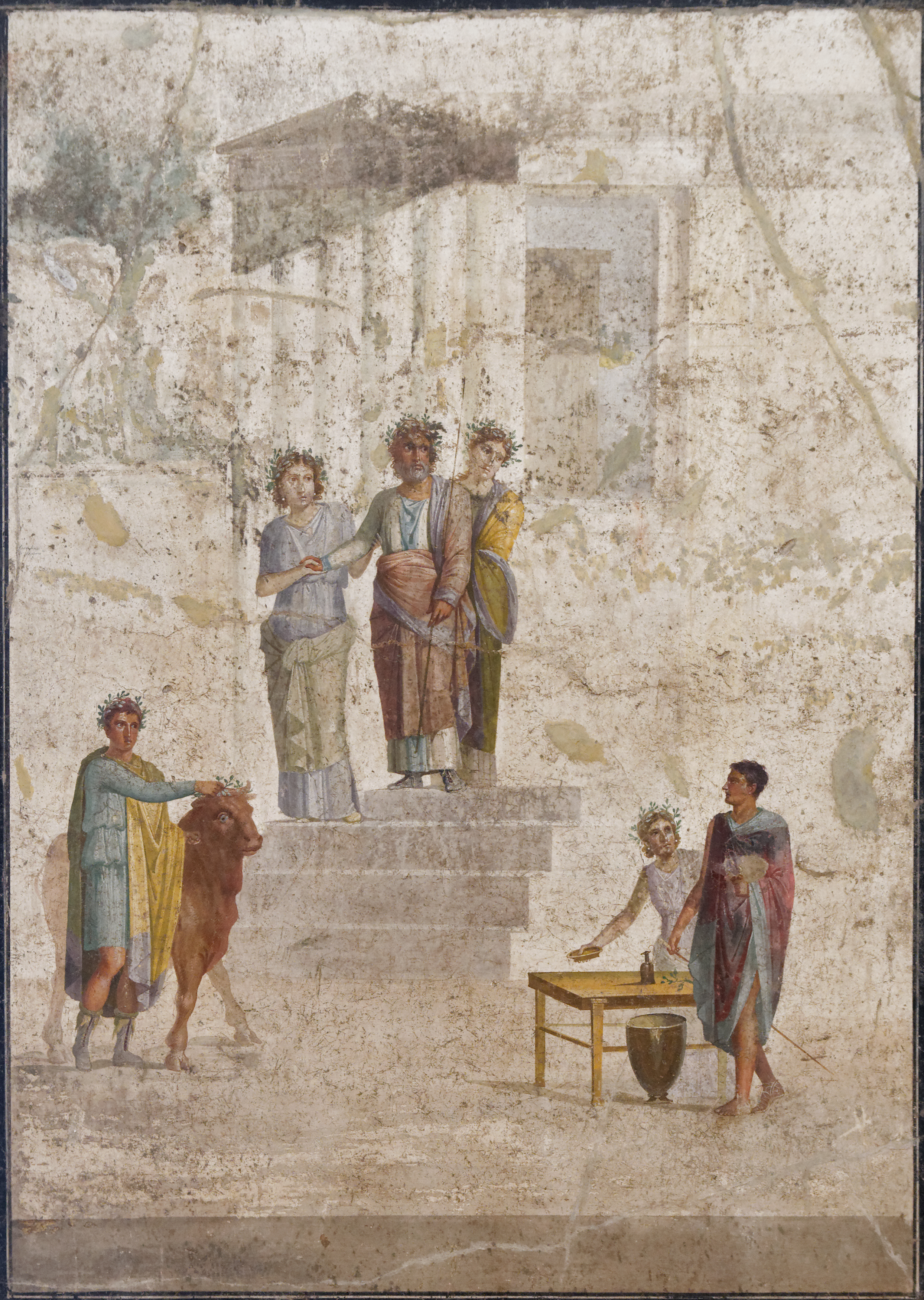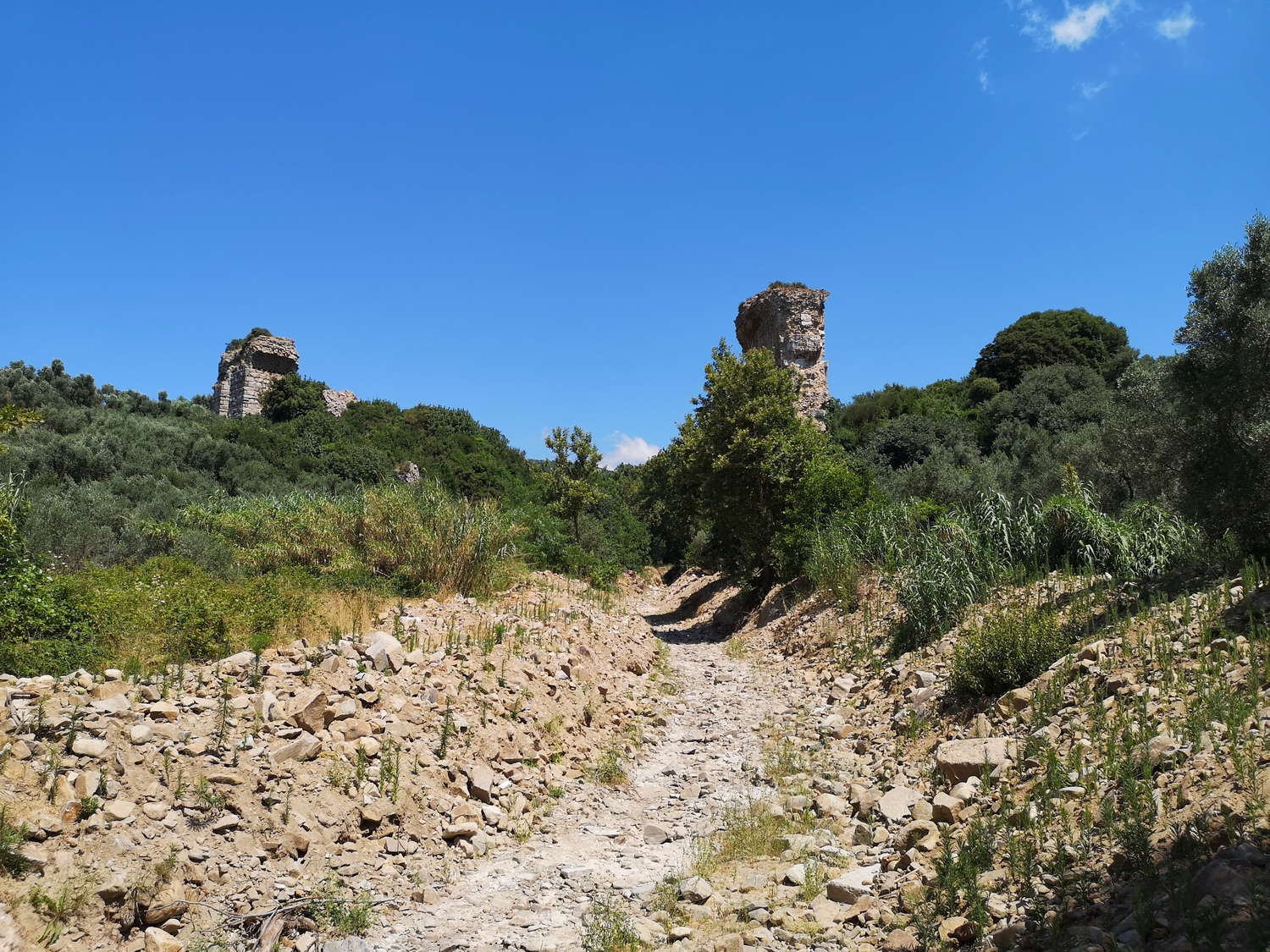|
Cyzicus
Cyzicus ( ; ; ) was an ancient Greek town in Mysia in Anatolia in the current Balıkesir Province of Turkey. It was located on the shoreward side of the present Kapıdağ Peninsula (the classical Arctonnesus), a tombolo which is said to have originally been an island in the Sea of Marmara only to be connected to the mainland in historic times either by artificial means or an earthquake. The site of Cyzicus, located on the Erdek and Bandırma roads, is protected by Turkey's Turkish Ministry of Culture, Ministry of Culture. History Ancient The city was said to have been founded by Pelasgians from Thessaly, according to tradition at the coming of the Argonauts; later it received many colonies from Miletus, allegedly in 756 BC, but its importance began near the end of the Peloponnesian War when the conflict centered on the sea routes connecting Greece to the Black Sea. At this time, the cities of Athens and Miletus diminished in importance while Cyzicus began to prosper. Co ... [...More Info...] [...Related Items...] OR: [Wikipedia] [Google] [Baidu] |
Battle Of Cyzicus
The Battle of Cyzicus (Greek: ) took place in May or June 410 BC during the Peloponnesian War. During the battle, an Athenian fleet commanded by Alcibiades, Thrasybulus, and Theramenes routed and destroyed a Spartan fleet commanded by Mindarus. The victory allowed Athens to recover control over a number of cities in the Hellespont over the next year. In the wake of their defeat, the Spartans made a peace offer, which the Athenians rejected. Prelude Athens had been debilitated after the Sicilian expedition and its hold on the Hellespont had loosened with Persian support now behind Sparta. Cyzicus revolted from Athens in the summer of 411, but was recovered by the Athenian fleet after the Battle of Cynossema. In the wake of the Athenian victory at Abydos in November 411 BC, the Spartan admiral Mindarus sent to Sparta for reinforcements and began working with the Persian satrap Pharnabazus to plan for a new offensive. The Athenians, meanwhile, were unable to follow through on ... [...More Info...] [...Related Items...] OR: [Wikipedia] [Google] [Baidu] |
Siege Of Cyzicus
The siege of Cyzicus took place in 73 BC between the armies of Mithridates VI of Pontus and the Roman-allied citizens of Cyzicus in Mysia and Roman Republican forces under Lucius Licinius Lucullus. It was in fact a siege and a counter-siege. It ended in a decisive Roman victory. Background After his defeat at the hands of Lucius Cornelius Sulla during the First Mithridatic War (89-85 BC) Mithridates rebuilt his power and armies. Then, in 74 BC, Nicomedes IV the king of Bithynia died and the Romans claimed he had left his kingdom to Rome in his will. Bithynia had been a buffer state between Rome and Pontus. Its removal caused Mithridates to march his armies westwards and invade Roman territory. Prelude Marcus Aurelius Cotta, the Roman governor of Bithynia, was building up his forces when Mithridates invaded. Cotta, not ready to face Mithridates, retreated to Chalcedon, where he had the fleet to his back, and sent urgent messages to former consular colleague Lucullus, who h ... [...More Info...] [...Related Items...] OR: [Wikipedia] [Google] [Baidu] |
Alcibiades
Alcibiades (; 450–404 BC) was an Athenian statesman and general. The last of the Alcmaeonidae, he played a major role in the second half of the Peloponnesian War as a strategic advisor, military commander, and politician, but subsequently fell from prominence. During the course of the Peloponnesian War, Alcibiades changed his political allegiance several times. In his native Athens in the early 410s BC, he advocated an aggressive foreign policy and was a prominent proponent of the Sicilian Expedition. After his political enemies brought charges of sacrilege against him, he fled to Sparta, where he served as a strategic adviser, proposing or supervising several major campaigns against Athens. However, Alcibiades made powerful enemies in Sparta too, and defected to Persia. There he served as an adviser to the satrap Tissaphernes until Athenian political allies brought about his recall. He served as an Athenian general (strategos) for several years, but enemies eventually suc ... [...More Info...] [...Related Items...] OR: [Wikipedia] [Google] [Baidu] |
Argonauts
The Argonauts ( ; ) were a band of heroes in Greek mythology, who in the years before the Trojan War (around 1300 BC) accompanied Jason to Colchis in his quest to find the Golden Fleece. Their name comes from their ship, ''Argo'', named after its builder, Argus (Argonaut), Argus. They were sometimes called Minyans, after a prehistoric tribe in the area. Mythology The Golden Fleece After the death of King Cretheus, the Aeolian Pelias usurped the throne from his half-brother Aeson and became king of Iolcus in ancient Thessaly, Thessaly (near the modern city of Volos). Because of this unlawful act, an oracle warned him that a descendant of Aeolus would seek revenge. Pelias put to death every prominent descendant of Aeolus he could, but spared Aeson because of the pleas of their mother Tyro. Instead, Pelias kept Aeson prisoner and forced him to renounce his inheritance. Aeson married Alcimede, who bore him a son named Jason. Pelias intended to kill the baby at once, but Alcimede ... [...More Info...] [...Related Items...] OR: [Wikipedia] [Google] [Baidu] |
Bandırma
Bandırma ()Greek: Panormos(Πανορμος)is a municipality and district of Balıkesir Province, northwestern Turkey. Its area is 755 km2, and its population is 167,363 (2024). Bandırma is located in the south of the Marmara Sea, in the bay with the same name, and is an important port city. It is approximately two hours away from Istanbul, İzmir and Bursa. Bandırma may be reached by land, sea, air and rail. Regular ship trips are made to Tekirdağ and Istanbul from Bandırma every day. The accelerated train services between İzmir and Bandırma, which are made every day in connection with the ferry, offer a different transportation alternative. Bandırma is home to the fifth-largest port in Turkey, second in the Marmara sea to Istanbul. The annual average trade volume of Bandırma Port, which meets 90% of the exports from Balıkesir Province, is 800 million dollars. History Pre Byzantine and Byzantine period Bandırma, which has been named as Cyzicus, Panderma, or ... [...More Info...] [...Related Items...] OR: [Wikipedia] [Google] [Baidu] |
Balıkesir Province
Balıkesir Province () is a Provinces of Turkey, province and Metropolitan municipalities in Turkey, metropolitan municipality in northwestern Turkey with coastlines on both the Sea of Marmara and the Aegean Sea, Aegean. Its area is 14,583 km2, and its population is 1,257,590 (2022). Its adjacent provinces are Çanakkale Province, Çanakkale to the west, İzmir Province, İzmir to the southwest, Manisa Province, Manisa to the south, Kütahya Province, Kütahya to the southeast, and Bursa Province, Bursa to the east. The provincial capital is Balıkesir. Most of the province lies in the Marmara Region, Turkey, Marmara Region except the southern parts of Bigadiç Edremit, Kepsut, İvrindi, Savaştepe and Sındırgı districts and ones of Ayvalık, Burhaniye, Dursunbey, Gömeç and Havran, that bound the Aegean Region. Kaz Dağı (pronounced ), known also as Mount Ida, is located in this province. Balıkesir province is famous for its olives, Hot spring, thermal spas, and clean be ... [...More Info...] [...Related Items...] OR: [Wikipedia] [Google] [Baidu] |
Kapıdağ Peninsula
Kapıdağ Peninsula () is a tied island in northwestern Anatolia extending into the Sea of Marmara in Balıkesir Province, Turkey. The peninsula forms the Gulf of Bandırma on its east and the Gulf of Erdek on its west. Kapıdağ was the classical island of ancient Greek Arctonnesus, but was joined to the mainland by a narrow isthmus in historic times either by an earthquake or (according to legend) by Alexander the Great. It was also known as the Peninsula of Cyzicus after its chief town. Cyzicus was abandoned following a series of severe earthquakes, but served from 1303 to 1304 as the base of the Catalan Company of the East and was the site of the Battle of the Cyzicus in October 1303. After its conquest by the Ottoman Empire, it was part of the kaza of Erdek in the Bursa Vilayet, province of Bursa. Locations Erdek, a small town known as a seaside resort, is located in the Gulf of Erdek west of the peninsula. Erdek hosts a Erdek Naval Base, naval base of the Turkish Navy. Re ... [...More Info...] [...Related Items...] OR: [Wikipedia] [Google] [Baidu] |
Eudoxus Of Cnidus
Eudoxus of Cnidus (; , ''Eúdoxos ho Knídios''; ) was an Ancient Greece, ancient Greek Ancient Greek astronomy, astronomer, Greek mathematics, mathematician, doctor, and lawmaker. He was a student of Archytas and Plato. All of his original works are lost, though some fragments are preserved in Hipparchus' ''Commentaries on the Phenomena of Aratus and Eudoxus''. ''Theodosius' Spherics, Spherics'' by Theodosius of Bithynia may be based on a work by Eudoxus. Life Eudoxus, son of Aeschines, was born and died in Cnidus (also transliterated Knidos), a city on the southwest coast of Anatolia. The years of Eudoxus' birth and death are not fully known but Diogenes Laertius, Diogenes Laërtius gave several biographical details, mentioned that Apollodorus of Athens, Apollodorus said he reached his wikt:acme#English, acme in the 103rd Olympiad (368–), and claimed he died in his 53rd year. From this 19th century mathematical historians reconstructed dates of 408–, but 20th century schola ... [...More Info...] [...Related Items...] OR: [Wikipedia] [Google] [Baidu] |
Miletus
Miletus (Ancient Greek: Μίλητος, Mílētos) was an influential ancient Greek city on the western coast of Anatolia, near the mouth of the Maeander River in present day Turkey. Renowned in antiquity for its wealth, maritime power, and extensive network of colonies, Miletus was a major center of trade, culture, and innovation from the Bronze Age through the Roman period. The city played a foundational role in the development of early Greek philosophy and science, serving as the home of the Milesian school with thinkers such as Thales, Anaximander, and Anaximenes of Miletus, Anaximenes. Miletus's prosperity was closely linked to its strategic coastal location and the productivity of its surrounding rural hinterland, which supported thriving agriculture and facilitated wide-ranging commercial activity. The city established dozens of colonies around the Mediterranean Sea, Mediterranean and Black Sea, significantly shaping the Ancient Greece, Greek world’s expansion. Archae ... [...More Info...] [...Related Items...] OR: [Wikipedia] [Google] [Baidu] |
Sea Of Marmara
The Sea of Marmara, also known as the Sea of Marmora or the Marmara Sea, is a small inland sea entirely within the borders of Turkey. It links the Black Sea and the Aegean Sea via the Bosporus and Dardanelles straits, separating Turkey's European and Asian sides. It has an area of , and its dimensions are . Its greatest depth is . Name The Sea of Marmara is named after the largest island on its south side, called Marmara Island because it is rich in marble ( Greek , ''mármaron'' 'marble'). In classical antiquity, it was known as the Propontis, from the Greek words ''pro'' 'before' and ''pontos'' 'sea', reflecting the fact that the Ancient Greeks used to sail through it to reach the Black Sea, which they called ''Pontos''. Mythology In Greek mythology, a storm on the Propontis brought the Argonauts back to an island they had left, precipitating a battle in which either Jason or Heracles killed King Cyzicus, who had mistaken them for his Pelasgian enemies. Geography ... [...More Info...] [...Related Items...] OR: [Wikipedia] [Google] [Baidu] |
Peloponnesian War
The Second Peloponnesian War (431–404 BC), often called simply the Peloponnesian War (), was an Ancient Greece, ancient Greek war fought between Classical Athens, Athens and Sparta and their respective allies for the hegemony of the Ancient Greece, Greek world. The war remained undecided until the later intervention of the Achaemenid Empire, Persian Empire in support of Sparta. Led by Lysander, the Spartan fleet (built with Persian subsidies) finally defeated Athens which began a period of Spartan hegemony over Greece. Historians have traditionally divided the war into three phases. The first phase (431–421 BC) was named the Ten Years War, or the Archidamian War, after the Spartan king Archidamus II, who invaded Attica several times with the full hoplite army of the Peloponnesian League, the alliance network dominated by Sparta (then known as Lacedaemon). The Long Walls of Athens rendered this strategy ineffective, while the superior navy of the Delian League (Athens' all ... [...More Info...] [...Related Items...] OR: [Wikipedia] [Google] [Baidu] |






